Hi there, this is Arkady posting this. Some of you may know that I have an aversion to trains; I don't feel safe in them and generally just prefer not to catch them. However, the Métropolitan in Paris has now become an exception. Catching the Metro during our five days was definitely something that I looked forward to, and some regularity in our routine. And because of our unlimited travel passes for the period it was very easy to use as well. I will warn you now: this post may very well be quite boring and way too long.
First some facts about the system:
1. It is the second biggest urban rail network in Europe (after Moscow) and fifth in the world
2. It is the third oldest in the world, after London and New York
3. The central station, Châtelet Les Halles, is the busiest underground station in the world, connecting 8 lines
4. The urban RER Line A is the busiest train line in the world
5. It carries over 1.68 billion people a year (4.5 million a day) on 16 lines through over 300 stations
6. It has the most closely spaced stations in the world, averaging 490 metres
And our personal statistics, we caught 9 lines, took 25 trips and went through 79 stations.
Our journeys started on Monday, as we had to catch it into the city from where our camping ground shuttle bus dropped us off at the oldest station, Porte Maillot, on Line 1 (yellow). This was the first line built and opened in 1900 for the inner parts of the city. The trains run on the right, unlike regional trains, because the Parisians didn't want it to connect to the outer suburbs. And now the line that we had to catch every morning and evening was the busiest, carrying 500 000 people every day.
Luckily, then, that Paris has one of the most efficient systems in the world, taking less than a minute to travel from station to station, stopping for only around 15 seconds, and coming as often as every 2 minutes during the day. We could use them to link up all of the major attractions and lesser-known ones, easily aiding our visit. And there wasn't even that much overcrowding (or saturation as it is called here) that we experienced, or lateness, and on the two occasions when we did it was nowhere near as unbearable as when we visited Rome.
Now, and I promise I won't write too much more, to the station architecture and design. Due to the extremely bad lighting on the platforms in 1900, the station walls were tiled in white to reflect any light, and the station name was often white tiles on blue. The lines generally followed the direction of streets, leading to weird connections at many stations, and were shallow. During the 1960s revitalisation led to what many stations have now, bright orange and green lighting and fluorescent shell seats that are very cool.
Many stations have also accumulated other works of art over the years:
-Abbesses, the deepest at 36 metres, has one of two original fancy entrances with a glass canopy and green yellow sign supported by two lampposts; and a spiral staircase with a mural of Paris on the sides.
-Concorde, with some 1977 Constitution or important bill written out on all the tiles.
-Louvre-Rivoli, which has copies of all of its famous artworks down below.
-Gare de Lyon, which has an exotic rainforest garden on the sides of the line.
-Many others have statues representing Parisian monuments.
One important part of the Metro that I feel that I should mention is the mussy (musical) accompaniment (busking) that takes place on so many trains and at stations. They ranged from a lone violinist, who got on one train for a few stations but played almost solely in front of a young lady who was listening to her own music; to a 10-piece orchestra at Châtelet played in one of the big corridors, receiving a lot of attention from tourists, selling their CDs and even talking to members of the public. In between there were the lonely accordionists and keyboardists on the stations who weren't quite in time or tune with the train; and a jazz duo who hopped on one morning, announced that they were just going to play a few tunes, started a backing track and played a few recognisable songs. It was occasionally a little awkward but obviously you would get used to it.
Finally, I will write about the very new Line 14, which uses fully automated (driverless) trains where you can see and walk through from one end to the other inside the train (which is very cool). It was built right through all of the central stations to ease congestion, goes extremely fast and has glass doors on the platform that line up with the train to prevent accidents and suicides. And, again, it is very efficient, unlike Sydney's.
If you have read right to this point: sorry for boring you so much and I promise that I will not blog again. We are just driving back into the Netherlands as I write this, so even if any other bloggers post anything new before we arrive back in a week it will be of a higher standard. And enjoy the "metro-politician" (as Anika calls them) photos.
skip to main |
skip to sidebar

























































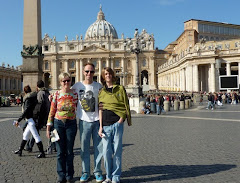


































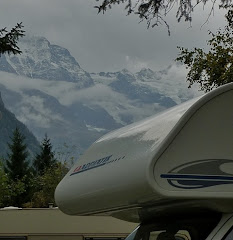








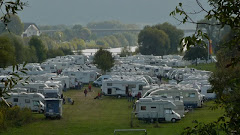


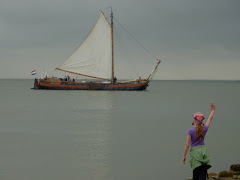








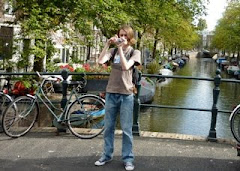



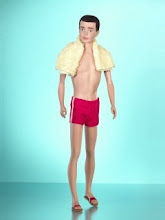
Around Europe in a motorhome.





















































































































Search
Followers
Blog Archive
About Me

- Peet dJ
- Sydney, Australia
- 8 weeks on leave, driving a motorhome around Europe with the family.



Hi Arkady, so glad that you enjoyed the metro. It does sound amazing.
ReplyDelete